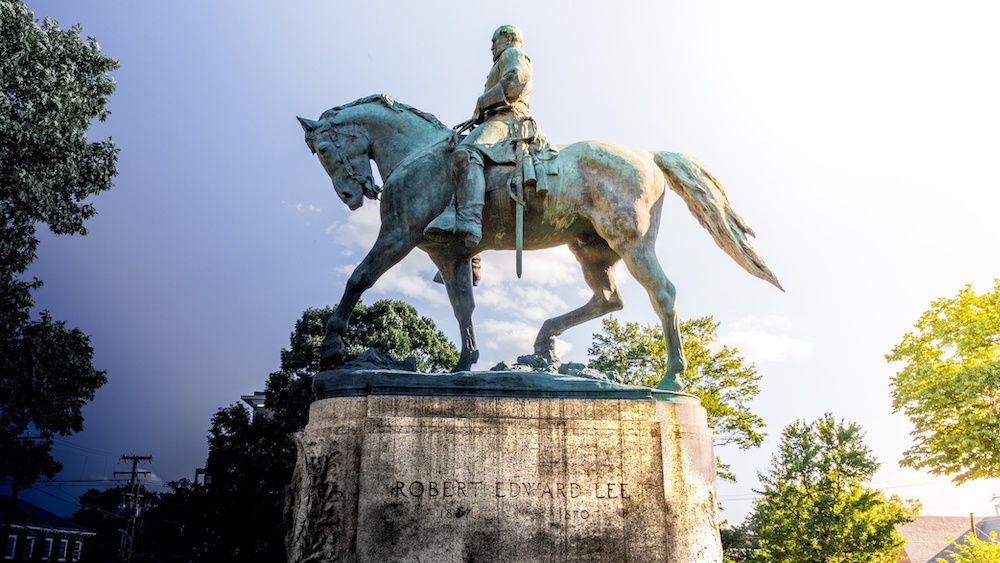If you’re interested in sharing your opinion on any cultural, political or personal topic, create an account here and check out our how-to post to learn more.
____
“The Confederacy was on the wrong side of history and humanity. It sought to tear apart our nation and subjugate our fellow Americans to slavery. This is the history we should never forget and one that we should never again put on a pedestal to be revered.
As a community, we must recognize the significance of removing New Orleans’ Confederate monuments. It is our acknowledgment that now is the time to take stock of, and then move past a painful part of our history. Anything less would render generations of courageous struggle and soul-searching a truly lost cause.”
— New Orleans Mayor Mitch Landrieu, upon removal of the city’s last remaining Confederate monuments in 2017
Mississippi’s decision this week to eliminate a Confederate symbol from its state flag is the culmination of more than 40 years of activism, and a single step in the ongoing effort to eliminate white supremacist imagery and monuments from our public spaces.
It seems at last that we have the will, as a nation, to confront the ugly truth about these monuments built as symbols of resistance to racial equality. As long as they remain in places of honor, they remain symbols of resistance to racial equality.
More than 1,500 public monuments and memorials to the Confederacy remain in the United States, in 31 states plus the District of Columbia — far exceeding the 11 Confederate states. Almost none of these monuments or memorials were created in the immediate aftermath of the Civil War, and almost none were intended to memorialize the dead. There were two huge spikes in construction: in the early 1900s, after *Plessy v. Ferguson unleashed the terroristic system of Jim Crow, and then again in the 1950s and 1960s as the 20th Century Civil Rights Movement gained traction.
The current Mississippi flag was adopted 30 years after the end of the Civil War. The state’s Civil War-era flag didn’t even feature Confederate imagery.
The notion of “erasing history” is the hollowest of defenses. The truth is, the reality of Black voices finally being heard is an unsettling development for people so accustomed to white privilege they can scarcely discern its very presence.
What respect for history really means is reckoning with the horror of two and a half centuries of chattel slavery and another century of the institutionalized terrorism known as Jim Crow.
The Cult of the Lost Cause, which draped the atrocities of the Confederacy in a gauzy lie about states’ rights, infects our public discourse even today. The state of Texas finally voted in 2018 to teach that slavery was the central issue of the Civil War.
The illusion that Confederate memorials are anything but a celebration of white supremacy collapses under the slightest scrutiny. Take for example the 1913 dedication of a Confederate monument at the University of North Carolina, later nicknamed “Silent Sam.”
University trustee Julian Carr urged the audience to devote themselves to the maintenance of white supremacy with the same vigor that their Confederate ancestors had defended slavery. He praised Confederate soldiers for their defense “of the Anglo Saxon race during the four years after the war,” when “their courage and steadfastness saved the very life of the Anglo Saxon race in the South.” These four years refer to the rise of the Ku Klux Klan, which Carr supported. He then boasted that “one hundred yards from where we stand, I horsewhipped a negro wench until her skirts hung in shreds because she had maligned and insulted a Southern lady.”
Students pulled the statue from its pedestal in 2018.
Confederate statues in public spaces, near government buildings — especially in front of courthouses, where people go to seek justice — are a form of racial intimidation. They are meant to assure those who approach that “white supremacy reigns here.” If we want to dispense with white supremacy, we must dispense with its signifiers. They advertise a product no one wants any more.
In the Gettysburg Address, Abraham called on the nation to “strive on to finish the work we are in, to bind up the nation’s wounds.” More than a century and a half later, we are still striving to bind up the nation’s wounds.
#TakeEmDown, now.
____
Marc H. Morial is the President and CEO of the National Urban League.
